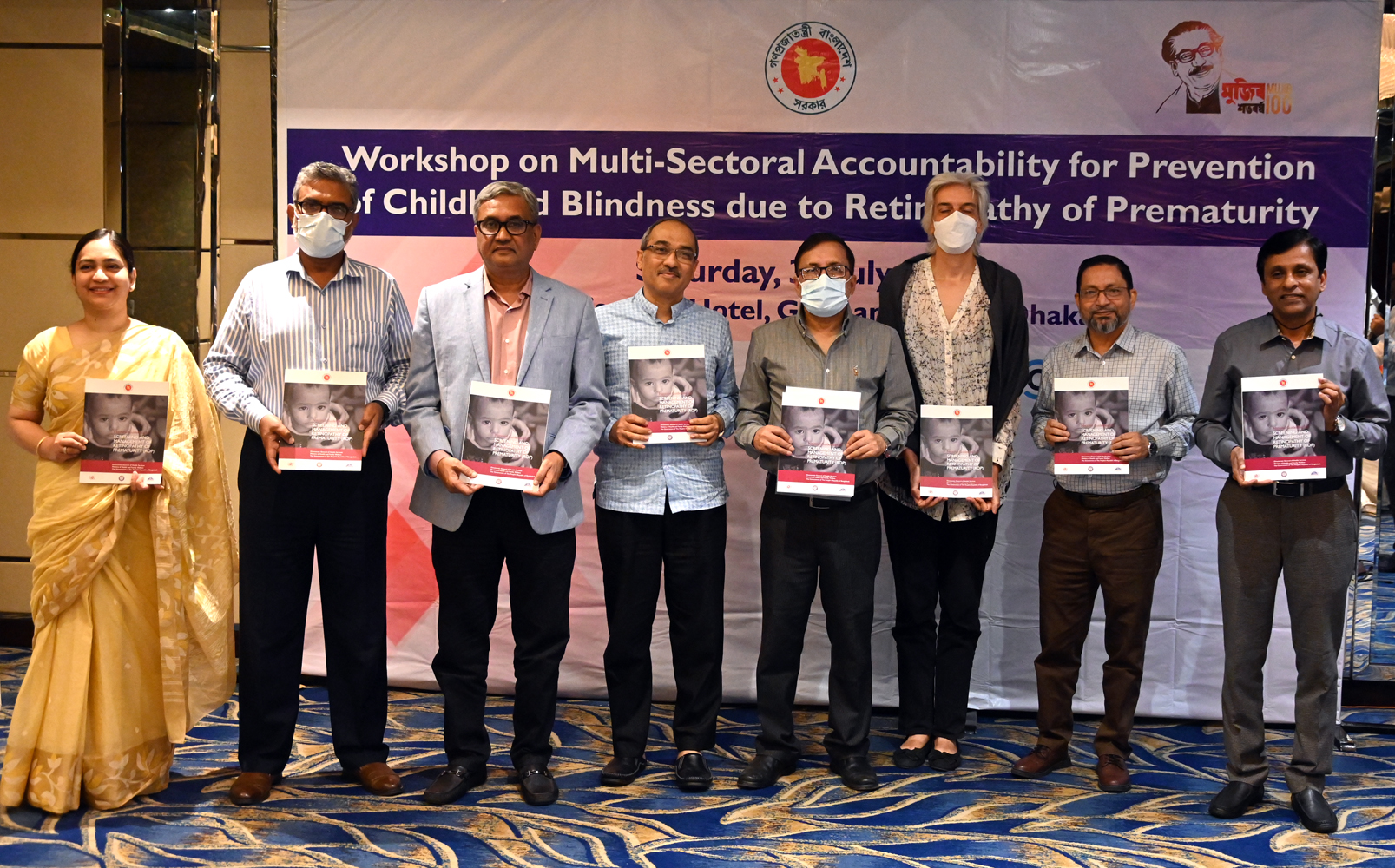Country’s first national guidelines on ROP management published
Health experts expect it will help prevent childhood blindness

The government has published a set of guidelines for combating retinopathy of prematurity (ROP), the leading cause of childhood blindness in Bangladesh, for the first time in the country’s history.
The cover of the document, the National Guidelines for Screening and Management of ROP, was unveiled at a function at Renaissance hotel in the capital on Saturday.
Directorate General of Health Services (DGHS) Director General Prof Dr Abul Bashar Mohammad Khurshid Alam, Directorate General of Medical Education (DGME) Director General Prof Dr AHM Enayet Hussain, DGHS Director Dr Md Shamsul Haque, Bangladesh Medical and Dental Council (BMDC) President Prof Dr Mohammod Shahidullah, and representatives of other stakeholders unveiled the cover.
The guests attending the publication ceremony expressed the hope that the prevention of ROP-related blindness would be possible if the guidelines are followed with a multisectoral approach.
The main objective of the guidelines is to provide gynaecologists and obstetricians, neonatologists, ophthalmologists, anaesthesiologists and allied eye care professionals, teams of special care newborn unit (SCANU) and newborn intensive care unit (NICU), hospital managers, and development organisations with a framework for developing eye care health services for the prevention of childhood blindness caused by ROP.
The National Newborn Health Program (NNHP) and Integrated Management of Childhood Illness (IMCI) of the Directorate General of Health Services (DGHS) have prepared and published the guidelines in collaboration with Ophthalmological Society of Bangladesh (OSB), Obstetrics and Gynecological Society of Bangladesh (OGSB), Bangladesh Neonatal Forum (BNF), Orbis International, IRD Global, WHO, UNICEF, Save the Children.
BSMMU, National Eye Care (NEC), National Institute of Ophthalmology and Hospital (NIOH) offered technical assistance for the preparation of the guidelines.
Orbis International Bangladesh Country Director Dr Munir Ahmed, UNICEF Bangladesh Chief of Health Maya Vandenent, IRD Global Bangladesh Country Director Dr Tapash Roy, BSMMU Department of Ophthalmology Professor Dr Nuzhat Choudhury, and Prof Dr Nazmoon Nahar were present at the guideline unveiling ceremony.
According to the guidelines, ROP is a growing problem in Bangladesh like in other developing countries. “Though the actual prevalence of ROP in Bangladesh is unknown, but the rate of ROP has been found to affect as many as 40% of the preterm infants,” it says.
It is estimated that around 169,640 babies are affected by ROP every year as approximately 14.5 percent or 424,100 babies are born prematurely i.e. before the start of the 37th week of gestation, in the country out of the 3.75 million births annually.
Speaking at the ceremony, DGHS Director General Prof Khurshid Alam said the incidence of ROP-caused blindness could be reduced substantially if the guidelines are followed properly.
Prof Enayet called upon the stakeholders to work in a coordinated way and with a sense of ownership to implement the guidelines to combat childhood blindness.
Dr Md Shamsul Haque highlighted the lack of awareness among the public and even among some stakeholders about ROP and called for awareness campaigns for raising awareness. He suggested the incorporation of ROP in medical curricula.
Dr Munir suggested measures to make full use of the RetCamp, an advanced digital imaging system for ophthalmic visualisation, available at different healthcare facilities across the country. He laid emphasis on the greater involvement of NGOs in eye health care.
A workshop on Multi-Sectoral Accountability for Prevention of Childhood Blindness due to ROP was held before the cover unveiling of the guidelines.
Participants in the workshop suggested taking a coordinated approach to manage ROP, offering training to stakeholders for capacity building, establishing a network among SCANUs and NICUs for better coordination, developing an appropriate referral chain for follow-up services, organising seminar/symposium on ROP services for awareness building, and engaging NGOs in eye health care in a greater way for better services.


